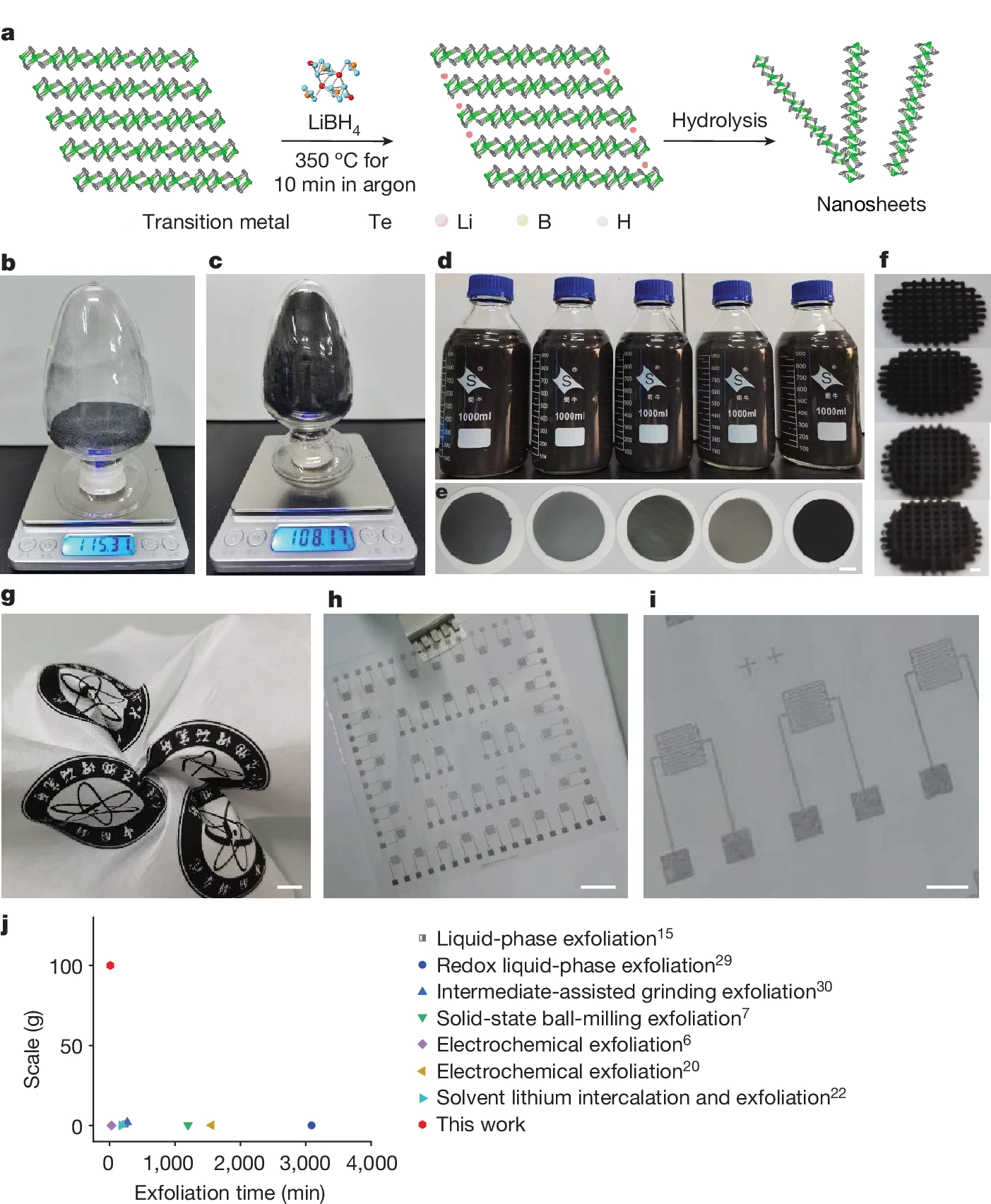L.Z. Zhang, Z.X. Yang, S. Feng, Z.B. Guo, Q.C. Jia, H.D. Zeng, Y.J. Ding, P. Das, Z.H. Bi, J.X. Ma, Y.Q. Fu, S. Wang, J.X. Mi, S.H. Zheng, M.R. Li, D.-M. Sun, N. Kang *, Z.-S. Wu * and H.-M. Cheng *
Nature, 2024, 628.
DOI: 10.1038/s41586-024-07209-2 [PDF]

Transition metal tellurides (TMTs) have been ideal materials for exploring exotic properties in condensed-matter physics, chemistry and materials science1,2,3. Although TMT nanosheets have been produced by top-down exfoliation, their scale is below the gram level and requires a long processing time, restricting their effective application from laboratory to market4,5,6,7,8. We report the fast and scalable synthesis of a wide variety of MTe2 (M = Nb, Mo, W, Ta, Ti) nanosheets by the solid lithiation of bulk MTe2 within 10 min and their subsequent hydrolysis within seconds. Using NbTe2 as a representative, we produced more than a hundred grams (108 g) of NbTe2 nanosheets with 3.2 nm mean thickness, 6.2 µm mean lateral size and a high yield (>80%). Several interesting quantum phenomena, such as quantum oscillations and giant magnetoresistance, were observed that are generally restricted to highly crystalline MTe2 nanosheets. The TMT nanosheets also perform well as electrocatalysts for lithium–oxygen batteries and electrodes for microsupercapacitors (MSCs). Moreover, this synthesis method is efficient for preparing alloyed telluride, selenide and sulfide nanosheets. Our work opens new opportunities for the universal and scalable synthesis of TMT nanosheets for exploring new quantum phenomena, potential applications and commercialization.